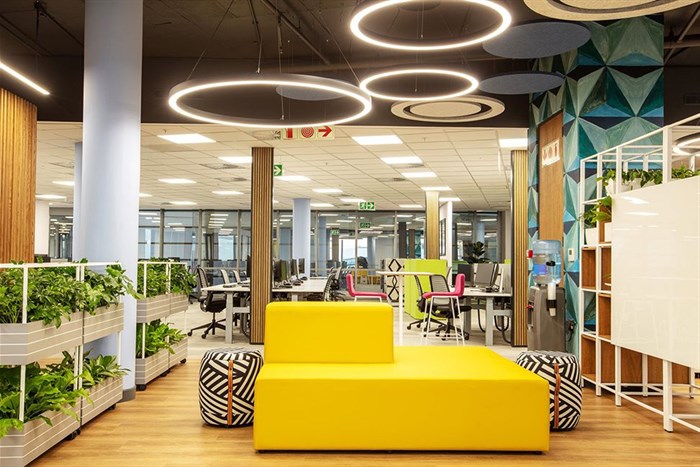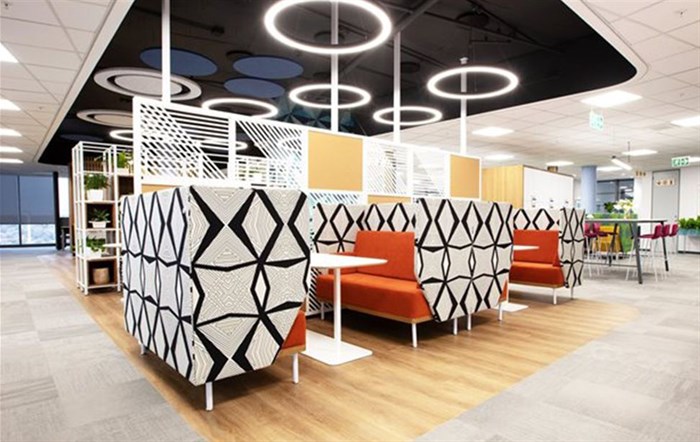As the global workforce continues to navigate the evolving landscape of work, Stacey-Lee Kruger, head of design at Trend Group, sheds light on the prominent trends anticipated to continue to shape office and workspace design in 2024.

Source: Supplied.
An ongoing trend is the merging of home and office environments. “The amenities of home in an office environment are not fading away anytime soon,” states Kruger. “Companies are embracing this approach as market growth accelerates, making it a key driver in office design and workspace planning.”
Addressing the challenges of a diverse workforce, Kruger notes the importance of accommodating different generational preferences. “The psychology of office design involves convincing and enticing different generations to use their space optimally,” she says. The shift from closed-off office spaces to a more integrated design approach fosters collaboration and communication across age groups.
Kruger underscores the link between productivity and comfort. “If you expect someone to sit for eight hours a day, you have to be willing to give them the tools to do it right.”
The combination of design and furniture, with a focus on ergonomics, ensures functional and comfortable workspaces. A growing demand for personalisation in office environments has resulted in the trending concepts of ‘resimercial’ and ‘hotelification’. “Our task is to amalgamate all of the design assets into a commercial design that is functional, aesthetic, and productive,” highlights Kruger.
The end result is adaptable workspaces that offer comfort and functionality akin to high-end environments.
Kruger points to the increasing appeal of biophilic design, noting its calming impact. “Everybody wants to feel nature around them,” she says. The play on textures, combining elements like plants, timber, concrete, metals, fabrics, and white surfaces, creates a harmonious workspace.
Localising office spaces
International brands are increasingly looking to incorporate a local feel in their offices. “Every brand wants something they can resonate with,” says Kruger, emphasising the importance of bringing in subtle touches to make spaces impactful and relatable.
The growing use of a range of colours in office design underscores the intentional application of colour therapy and colour blocking. In terms of the latter, different colours are selected to create specific atmospheres and space functionality.
As companies grow and market dynamics continue to shift in a volatile business environment, Kruger notes the importance of futureproofing workspaces. “Future-planning is accounted for in our design,” she explains, advocating for modular designs that allow companies to adapt easily without compromising the base build.
Trend Group's commitment to innovation is underscored by the Design Collab at its Sandton head office, which affords clients a tactile experience of the latest designs, trends, and technology. “It is completely different from a virtual walkthrough,” notes Kruger, stressing how vital physical interaction is for clients to explore design iterations.

Source: Supplied.
Below are the trends anticipated to have a major impact on the market in 2024:
Combining home and the office: Working from home gave workers much more choice in how they utilised their environment. This is having a profound impact on how companies perceive their workspaces.The new premium workspace: Workspaces can go beyond comfort and even be luxurious. It points to how office design is evolving to create individualised, aesthetically pleasing spaces, as often found at home or even in hotels.Sustainability and biophilic design: Sustainability allows companies to reduce their environmental footprint and enrich their corporate culture in terms of ESG goals.Flexible, modular workstations: Workstations are increasingly modular so they can be reconfigured to cater for all kinds of teams. It is an effective means to enhance collaboration and utilise existing space much more efficiently.Say goodbye to the monotonous office: Bold colours and patterns counter the impression of a traditional staid office space. Eye-catching patterns and lively hues inject energy and personality into the workspace.As the world of work continues to evolve, Trend Group continues to lead the charge in creating innovative, functional, and aesthetically pleasing workspaces that cater to the diverse needs of today’s workforce and allow companies to retain top talent and boost their productivity.
“We are a leading design and workspace planning company committed to creating innovative and functional environments for the evolving needs of businesses. With a focus on collaboration, sustainability, and cutting-edge design, we ensure that workspaces not only meet today's requirements, but are also adaptable for future growth,” concludes Kruger.








































